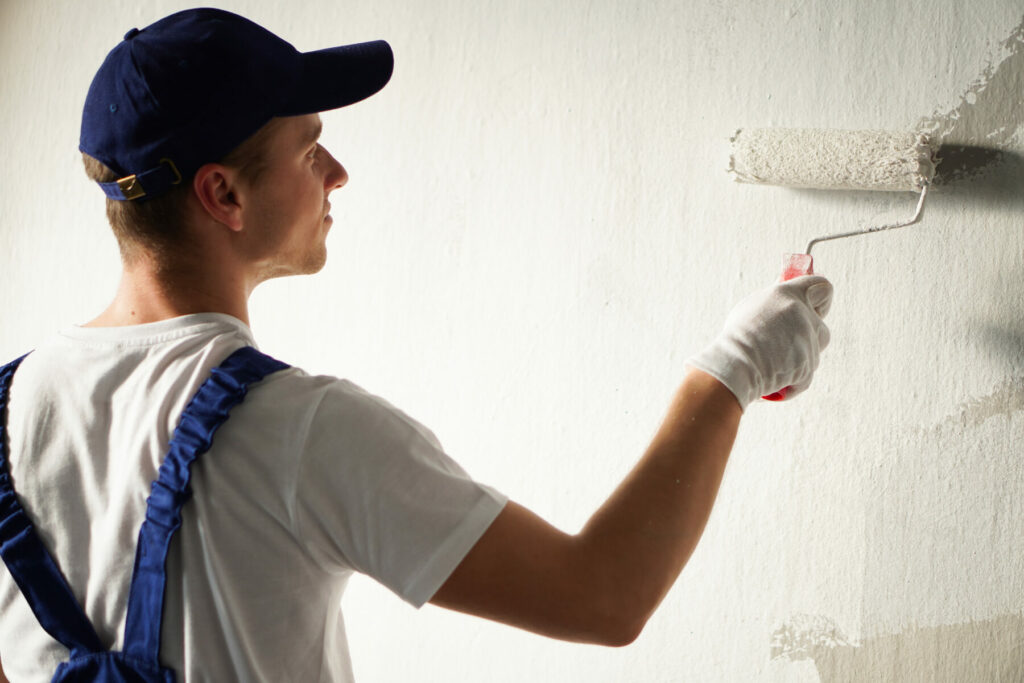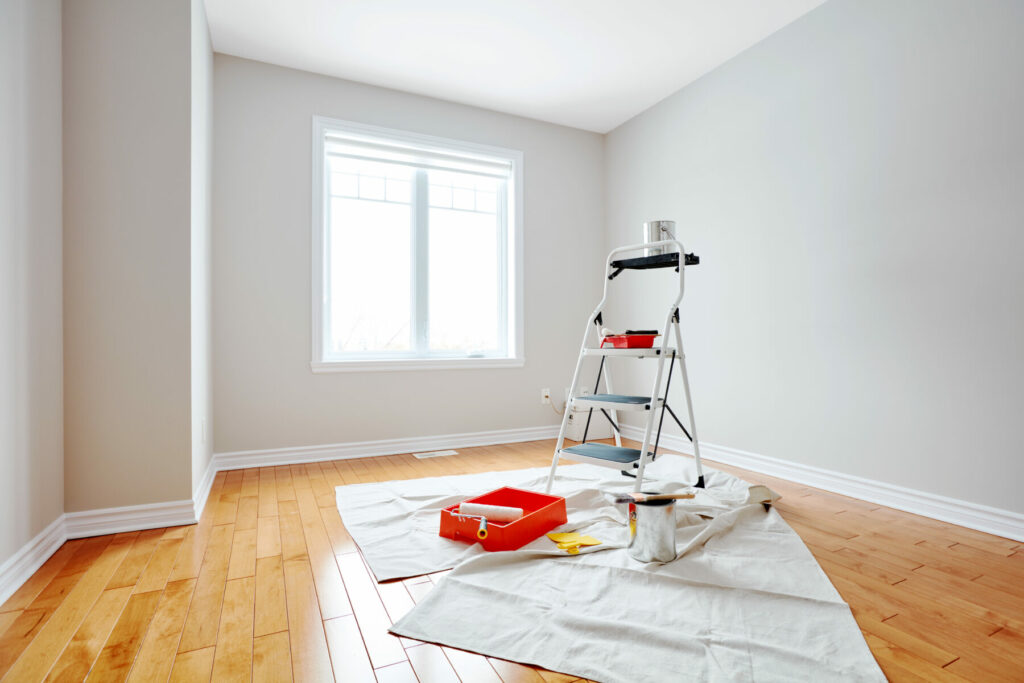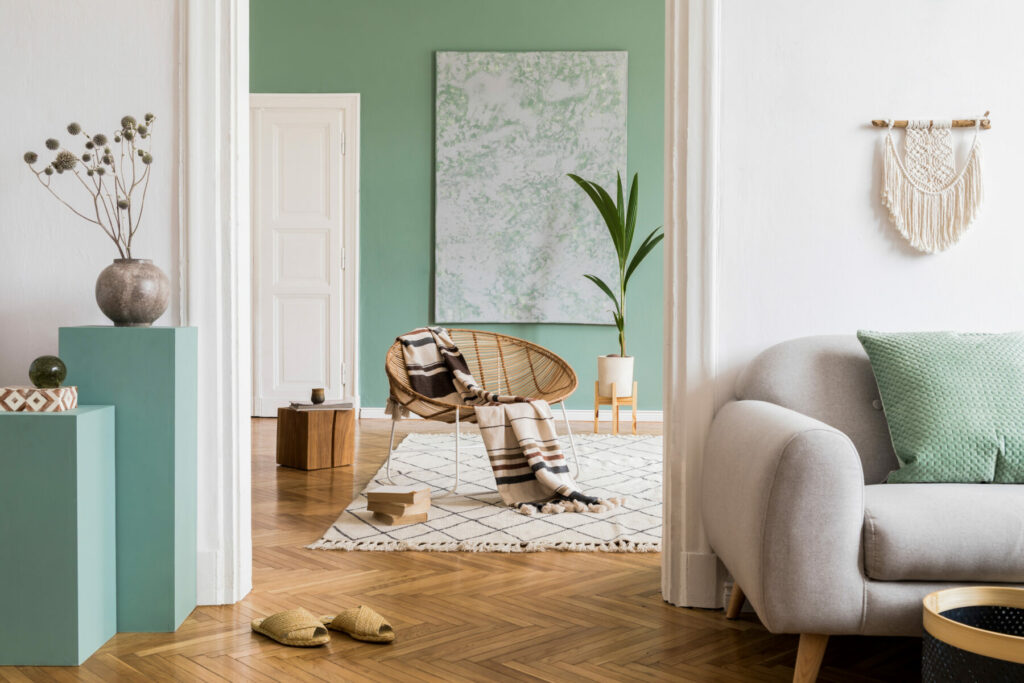Whether you’re planning a DIY painting project or hiring the best house painters available, it’s important to understand the cost of interior house painting. In this article, Prep&PaintPro explains the main factors that affect cost: so you can stay within budget and get the best possible results, at minimum inconvenience to you.
Why Paint Your Home’s Interior Walls?
How Much Is It To Paint Interior Walls?
How to Estimate Interior Painting
Advantages of Hiring a Professional
Why Paint Your Home’s Interior Walls?
When it comes to home improvement projects, painting the interior walls is often one of the first things that comes to mind. And for good reason – a fresh coat of paint can make a world of difference to the look and feel of any room. But beyond creating a more inviting space for you and your family, there are a few other key benefits to consider.
Paint is a cost-effective way to improve the resale value of your property. As it can help disguise imperfections in the walls, landlords will be more likely to attract quality tenants and higher rent prices.
How Much Is It To Paint Interior Walls?
Many variables shape the final cost of interior painting. With the below factors as a guide, you can plan your project with confidence. While the below factors are known to influence painting costs, this information should only be used as a guide. Contact your local house painter for a more detailed estimation.
Size of the Rooms
The size of your home will affect cost, as will the number of rooms being painted. The larger the room, the more materials and time you (or the contractor) will need to invest. Ceilings higher than the average 2.7m will come with an added cost: as painting can only be done safely with scaffolding in place.
Amount of Prep Work & Clean Up
For paint to last for years to come, the surface below must be clean and prepared underneath in the correct way. If you’re unsure of the level of preparation that needs to be done, professional painters can assess and advise on this.
Before commencing, you’ll also need to move all the furniture either outside or to the middle of the room. For spaces that aren’t easily accessible, this will also add cost.
Time and Resources
Time and resources can affect cost: for example, a tighter deadline will require a painting company to allocate more resources in order to finish on time. Alternatively if you are completing this painting job yourself, consider the adage “time is money”. Do you have the skills to paint your home in a timely manner, or is this best left to the professionals? For more on these benefits, jump to our section on hiring house painters.
Complexity
The complexity of your project will affect cost, which should be weighed against the potential results. If you’re looking to paint or include the following detailing elements, this may cost extra.
- Detailing work on fixtures, windows, doors, trims, architraves and skirting boards.
- Painting in hard-to-reach places, or rooms with complex dimensions.
- Any feature walls, hand painting or stencilling.
- Older style homes such as villas will require careful attention, while modern homes can be efficiently painted with a paint roller.
For more complex finishes like polished plaster, you will also need to call in the experts. The amount of paint required will depend on its type: with cost being affected as a result.
How to Estimate Interior Painting
You can estimate the square meterage for DIY house painting by multiplying the total length of the walls by the height of the room.
- Measure the total size of the space that needs to be prepped and painted.
- This includes walls, doors, door frames, window frames, kitchen cabinets, skirting boards, trims and the ceiling.
- Subtract the square meterage of places that don’t require painting: such as windows, double doors or wallpapered walls.
- Add the cost of tools to your total cost. DIY costs will depend on which tools you have already. For the best results, invest in the tools listed below and ensure they are good quality.
- Primer
- Sugar soap
- Drop cloths
- Painter’s tape
- Paint rollers and roller covers
- Work out how much paint you need by checking what’s known as its “coverage rate”. The lower the coverage rate, the thinner the coverage of the product and the more coats you will need to apply. As a rule of thumb, 1L of Dulux paint generally covers 16m2; Dulux Primer will cover about 14m2.
For a detailed cost breakdown, contact a professional painting company for a free no-obligation quote.
 Advantages of Hiring a Professional
Advantages of Hiring a Professional
A DIY paint job can be very time-consuming and skill intensive: particularly if you plan to paint uneven surfaces by hand. In these cases, the advantages of hiring a professional outweigh the cost: companies like Prep&PaintPro have decades of experience painting many types of homes across New Zealand.
Below are some of the key benefits to consider.
Mitigate Potential Health Hazards
Unless your home is a new build, you may be dealing with lead-based paint or asbestos. In New Zealand, lead-based paint was legal until the 1960s, and can be found in homes painted up until the 1980s. Even if this original coat has been painted over, it can still do damage to you, your family, your pets and neighbours—if dealt with incorrectly.
Professional painters have rigorous health and safety standards, as well as having the experience to safely remove these toxins. will prevent you from inhaling dangerous fumes or dust. Additionally, DIY projects can carry inherent risk: because of inexperience or accidents while painting.
Quality of the Painted Surface
From the quality paints used to the workmanship, there’s a high chance you’ll get better results by bringing in a seasoned professional. If you’ve watched a few YouTube videos on house painting, this can’t necessarily compete with years of experience painting homes across the country. Save on effort, and get a better result—unless you’re confident in completing the job yourself.
Cost of Painting Materials
When you bring in professional painters, you’re saving on the cost of tools. From a roller tray to a tack cloth and potentially excess paint, there are many things you’ll likely buy and not use again for another decade.
Choosing Your New Paint
The quality of the paint you choose will determine cost, as well as the quality of the end product. In general, higher quality paints are worth the upfront investment: they are more durable than cheaper paints, which tend to peel and warp over time.
Two things will affect paint costs: colour choice and finish.
Colour
Based on your colour choice, you will need a particular number of coats. If you’re repainting over the same colour for example, you may only need one coat. A new or lighter colour will often require more coats, in order to cover the existing paint. Custom colours will also add cost.
Finish
Paint comes in a number of finishes, each with their own associated cost.
- Flat or matte paint has the least amount of shine of all paint types. It can be used to cover imperfections, but is also less durable: it can easily be damaged by off-the-shelf household cleaners.
- Gloss or semi-gloss has the most shine, and is a durable choice because of this. You’ll often see this type of paint in high-traffic areas, as it does a great job of withstanding water. Because of this extra protection, gloss paints can come with an added price tag.
- Eggshell or satin paints have a slight shine, but combine the benefits of matte and gloss paints. This type of paint is often used for interior house painting.
Wall Preparation
Regardless of whether it’s a DIY project or you’re enlisting the help of experienced professionals, someone will need to ensure the following.
- Has the surface been dusted and cleaned of dirt or stains?
- Is there original paintwork that needs to be scraped, sanded or removed? If paint is damaged in any way (e.g. chipped, flaking or warping), it will have to come off.
- Is there any mould or residue that needs to be removed?
- Are there gaps, dents, scuff marks, cracks or holes that need to be filled, bogged or repaired?
- Do you need to remove or re-caulk broken caulking?
Calculating interior painting costs may seem daunting at first, but with a few painting tips and some help from professionals, you can have an estimate that’s accurate and tailored to your specific needs. Prep&PaintPro offers quality workmanship and affordable rates: contact us today for a free consultation. We look forward to helping you achieve the beautiful, polished look your home deserves.



